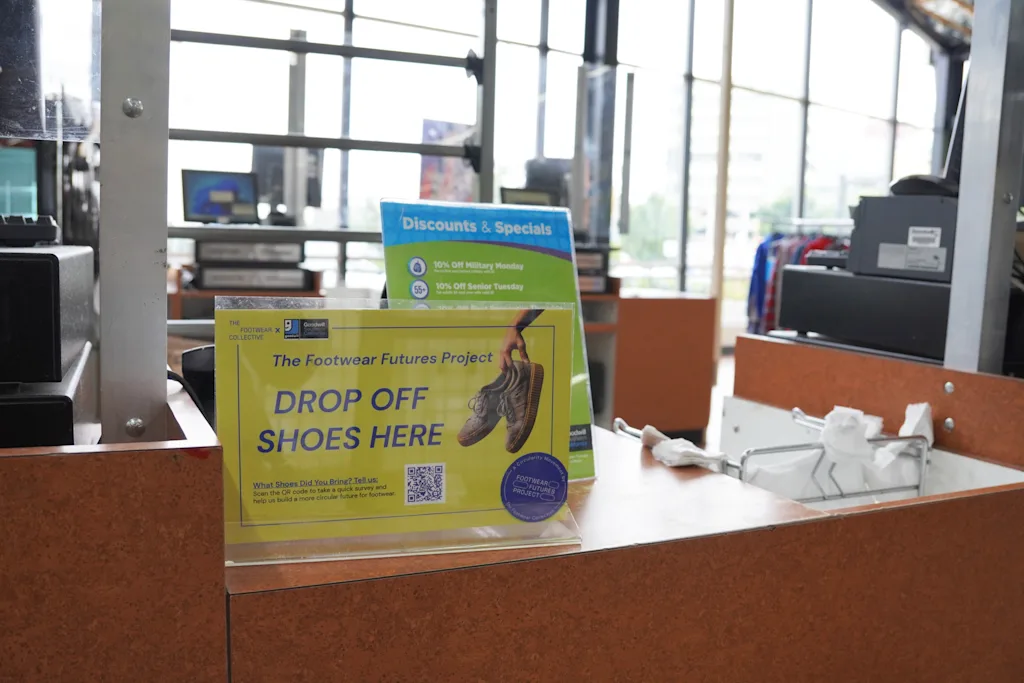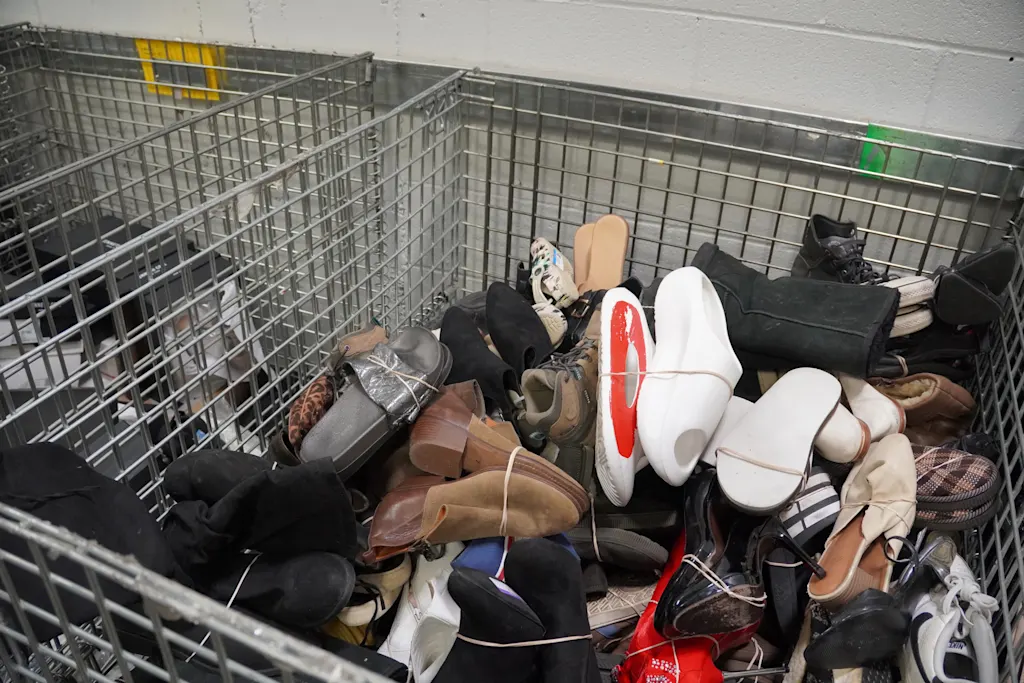
Every year, the $463 billion global footwear industry make 20 billion pairs of shoes for just 8 billion humans. Since virtually none of them are recyclable, they will end up clogging up landfills around the world.
For decades now, the fashion industry has been on a mission to make products recyclable. But shoes have been a much harder puzzle to crack than clothing. While garments are made from just a handful of materials, shoes are far more complex objects.
A sneaker can be made of 50 different materials from foam insoles to leather exteriors to cotton laces, all glued together with adhesives. A handful of brands have prototyped one-off recyclable shoes, like Adidas’s Futurcraft Loop or Nike’s IPSA Link Axis. But the shoe industry is far from recycling at scale.
But change is on the horizon. A group of sustainability experts wants to make shoe recycling as widespread as recycling paper or aluminum. Their solution: Radical collaboration among the biggest shoe rivals in the world.
Yuly Fuentes-Medel, a fashion sustainability expert who runs MIT’s Climate Project, has just launched The Footwear Collective (TFC), a non-profit devoted to building circular solutions for the footwear industry. She’s convened eight founding shoe companies—including Brooks, On, New Balance, and Steve Madden—and is recruiting more. It has also partnered with Goodwill to collect large quantities of shoes at scale.
The sustainability teams within these organizations meet with each other on a regular basis to tackle a pipeline of 50 different projects with achievable goals, like working with industrial recyclers to develop the technology to recycle shoes and finding secondary markets for the resulting recycled materials.
“The shoe industry is competitive, and these brands are rivals,” says Fuentes-Medel. “But by sharing costs, data, and infrastructure, they can achieve the sustainability goals that have eluded them for years.”

Collaboration is Crucial
The fashion industry is one of the biggest polluters in the world. Over the past three decades, fast fashion has driven down the price of both clothing and shoes, allowing consumers to cycle through products quickly. Extracting large quantities of raw materials and shipping them to factories all over the world to turn them into products results in roughly 8% of global carbon emissions, accelerating climate change.
For years, the industry has realized that circularity is one solution. Recovering the materials in old shoes and clothes, then transforming them back into materials for the fashion industry would dramatically reduce both waste and carbon emissions. But to achieve this circular system, you need a lot of infrastructure. First, you need to build out large, high-tech factories that can process these materials, and then you need to develop ways of collecting old products from consumers.
In the world of clothing, companies like Circ have only just developed the technology to recycle polyester cotton blends, the most common material in the apparel industry, and is now building out factories around the world. But the shoe industry is much farther away from a similar solution.
Fuentes-Medel observed that the footwear industry was struggling with this challenge. So in 2023, she hosted a footwear circularity summit at MIT, and was surprised by how much interest there was: Sustainability experts from 45 different shoe brands showed up. As they discussed possible solutions, Fuentes-Medel wrote up a “Footwear Manifesto” that laid out the obstacles to circularity and how to overcome them, such as building markets for recycled materials and ways of collecting old shoes. But one thing was clear from this summit: None of this could happen without collaboration.
“This approach makes sense,” says Katherine Petrecca, GM of footwear innovation at New Balance. “We’re working together on pre-competitive spaces. All of us will win if we have the infrastructure to collect and recycle shoes.”
After the event, brands were clamoring to continue this work. So Fuentes-Medel launched The Footwear Collective, with eight founding brands who pay dues to fund the project. Sustainability teams within these organizations meet every week with one another, as well as with other companies, to work towards solutions across seven pathways, including getting more value from waste, designing for circularity, and influencing consumer behavior. And together, they have come up with projects to work on, including finding a use for a particular recycled material to creating marketing materials that get consumers excited about recycling shoes.

The Problem of Scale
Many footwear brands have been on a mission to become more sustainable. But when a brand is going at it alone, there are many hurdles to achieving goals. “Recycling can only work at scale,” says David Kemp, director of corporate responsibility at Brooks.
For one thing, it will require a lot of work to develop the technology to automate the disassembly of shoes at scale, then recover their component materials. “Shoes companies hire teams of engineers to design and develop their products,” says Fuentes-Medel. “You really can’t think of them in the same category as clothing. They have to live up to much higher technical performance standards.”
Kemp says that the recycling industry is not incentivized to invest in developing this kind of high tech recycling facility because there isn’t a big market for the recycled materials that would come out of this process. For footwear brands, this would mean working with their factories to start using recycled foams, and leather, and hardware. “Recyclers are for-profit businesses,” he says. “Through the Collective, we can finally show recyclers that there’s business volume here worth investing in.”
A Pilot Program
Then, there’s the problem of how you collect large volumes of old shoes to recycle. Some brands, like Brooks, invite customers to bring back their old shoes once they’ve reached the end of their life. But Kemp says that participation in these programs is very low. “Historically, only around 3% of customers bring their shoes back to us,” he says. “This isn’t enough volume to bring to a factory to ask them to develop a recycling program for us.”
Again, Fuentes-Medel believes that the solution is to collect shoes from across many brands. And there’s already an organization that is doing this: Goodwill. TFW has decided to work with Goodwill’s California division, since the state has strong Extender Producer Responsibility (ERP) laws which mandate that companies fund and manage the collection, recycling, and reuse of their products. As a result, California can fund more sophisticated recycling operations.
With this new project, consumers are invited to drop off shoes from any brand at participating Goodwill locations in California. Shoes that cannot be resold will be sent to three recyclers, where they will be shredded. The shredded material will be separated by weight and density, so they can be sorted by material. (Rubber, foam, and cotton all have different densities.) Then the recycler can determine what materials can be recycled and sold. “We’re aligning with California, since we can help put their legislative policy into practice,” says Petrecca, of New Balance.
This is just one of many projects that TFC is working on right now. Other groups are working on changing the way brands design shoes to make them easier to disassemble, without losing any of their performance qualities. “We’re running two offenses,” Petrecca says. “We’re designing for what’s next, but we also need to figure out what to do with the billions of shoes that are already out there.”
For Fuentes-Medel, collecting data is crucial throughout all of these early pilots and tests. From all her years immersed in MIT’s quantitative approach to sustainability, she believes it is important to track exactly what happens so that they can measure impact. “We if don’t base our strategy on data, it’ll be just another greenwashing initiative that gets press but changes nothing,” she says.
But ultimately, Fuentes-Medel is optimistic that this small but committed collective is building a movement. So as TFW continues to grow and communicate with consumers, it wants to make circularity exciting and tangible, thanks to good storytelling. “Movements are built on joy,” she says. “Collective action depends on everyone feeling motivated to do their little bit, from sending in one pair of shoes to telling one friend.”
